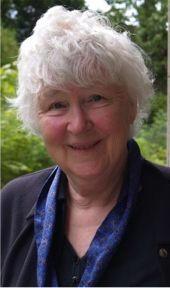
This autumn will see the publication of the book Ut å søke teneste (Looking to serve), which she has written in collaboration with Kari Telste. Sogner has also told the story of Norwegian servants to a European audience. She has written a chapter for the new book, Domestic Service and the Formation of European Identity: Understanding the Globalization of Domestic Work, 16th – 21st Centuries. Sogner’s contribution deals with the legal status of domestic servants in Norway from the seventeenth to the twenty-first centuries. The book has come about through a collaboration of European researchers, a network of researchers financed by the EU between 2001-2004.
European servants then and now
– The EU has probably supported this project because it sees immigrant labour in the care and household sectors as a striking phenomenon in contemporary Europe, she says. – This is something that we in Norway have perhaps not been so attentive to. However, we also import this kind of labour. Sogner refers to a new study that shows that the number of au pairs has increased markedly in this country in recent years, and that we import nurses and care workers to carry out work in the Norwegian welfare state.
Sølvi Sogner, herself, knows more about the history of domestic servants in Norway than she does about the contemporary situation. So, when, a few years ago, she read Lise Widding Isaksen’s article, "Kommer din au pair fra Litauen også?" (“Does your au pair come from Lithuania too?”), in the journal Kvinneforskning (Women’s Research), she invited the Sociologist to join the EU network. The result of this is that Lise Widding Isaksen has written the second Norwegian contribution,“Gender, Care and Globalization as seen from Norway", to the book on domestic servants in Europe.
Slaves and Serfs
Sølve Sogner goes back to 1150-1250 in her account of Norwegian domestic service. During that period slavery was abolished in Norway. – It’s not very often that we think of Norway as having had slaves, because we prefer to think of them as thralls, Sogner says. Nevertheless, compared to other Western countries, Norway abolished slavery fairly early.
– This is mostly due to the influence of the Church, Sogner explains. – It clearly had a civilising influence in this country.
The colonial powers such as Spain and England kept slavery for several hundred years longer.
– The British were shipping their black slaves to England right up until the 1700s. Yes, a few also brought them to Norway, but we should look on these stories as curiosa, Sogner says.
The existence of serfs, to the extent that their labour was coerced is, however, far from being a curiosity. This is rather a history of normal and daily life in a Europe that had a great need for labour.
– In today’s climate of technology we rarely think about how much work had to be done by the physical labour of both people and animals, Sogner says.
New opportunities for men – women dominated domestic service
In Norway the need for cheap labour was partially resolved by the recruitment to domestic service for a number of years of boys and girls from both the lower social strata and from some higher social strata. This took place mostly through smallholders and their families.
– A farmer would give a propertyless man who had married the chance to till the soil on his property. The smallholder was given a contract in which he and his family were obliged to carry out duties for the farmer, Sogner says, and adds; – It was an obligation that had to be fulfilled to the satisfaction of the farmer, and if not the smallholder would lose his right to his house and the land he worked, and he would have to move on and try his luck elsewhere.
It’s hardly surprising that the smallholder would look around for other opportunities.
– From the 1500s the national economy, in Norway too, became increasingly export-oriented and capitalist. For men this meant the opportunity of work connected with the extraction of minerals, copper and silver. Otherwise, there was the opportunity of becoming a sailor, or enrolling in the army or navy. These were jobs that were both more attractive and better paid than working in the service of a farmer, says the historian.
The first survey of domestic servants i Norway is from 1711, and already at that time there were twice as many women as men in service. The survey came about because the state imposed a tax on servants that was the equivalent to one sixth of their annual wage.
– It was a time of war, and the state needed the income. One solution they hit upon was to tax domestic servants. It was, however, the master who paid the tax. And it is evident that many servants didn’t earn any money, but worked for food and clothes, Sogner says.
From the country to the city
For a long time there was very little urbanisation in Norway, and as late as 1801 nine out of ten of the inhabitants lived in the country.
– Urbanisation first took place in the 19th and 20th centuries. And in the last two centuries Norway has experienced a total reversal of where poeple live, Sogner points out.
The flow of migrants was dominated by women, and in the cities women came to represent a solid majority of the population. The women left the country because the opportunities for work as maids, and later on in the expanding industries, were to be found in the cities.
– The opportunities of work for women changed in the urban environments. Where maids had previously carried out all domestic duties – also the productive work – there was now a specialisation towards more regular housework. The skills of cooking, baking and needlework for example were being sought after, Sogner says.
– Many women probably looked upon this as quite attractive. At home they were used to working in the dairy and out on the pastures. In town the conditions were different. There they had to wear a uniform and learn new customs and new jobs.
From life cycle to a lifetime
With industrialisation the character of the house changed from being a workplace and a place of production to a home. Fewer people were associated with each household. Previously, housemaids in the towns often had a yard hand, an apprentice and perhaps an errand boy for company. All day long the house was lively with activity. However, on into the 1900s, as production was taken out of the house, the kitchen became more lonely for servant girls. The occupations of butchering and weaving were no longer part of the servant girls’ chores. What remained was the type of housework that is never-ending: washing and preparing food. Additionally, new standards for washing and hygiene were established, Sogner explains. In Kristiania, as Oslo was then called, there were attempts to establish a school for servant girls. It was not a success.
– Town girls would rather work in a factory. They wanted to escape the discipline imposed on them by a mistress, says the historian.
– Service went from being a phase that most young women had to go through as a part of their training towards an adult life and becoming a housewife, a phase in their life cycle, to being something that only certain women did as an occupation. It became something for which there was no natural end, says Sogner.
– For middle class families it was no longer normal for daughters to go into service for a period of time to learn household skills. Middle class women had other plans for their daughters. They sent them to school, and they hoped they would achieve something more than they had themselves. This is how a more clearly defined social division emerged within households, Sølvi Sogner explains. Servant girls belonged to one social class, housewives to another. This also influenced the distribution of duties. While servant girls did the hard work, the housewife could concentrate on polishing the silver and playing bridge.
History’s and today’s underside
– Servant girls represent the underside of history. They are a group few historians and researchers have regarded as particularly interesting, or they were only interesting while they were young and could had the potential to achieve something more. Then they married, or continued in service their whole life. And when they were old and could no longer work, no one knew quite what to do with them, Sogner says. Such historical facts are documented.
– What we don’t know much about is the unpleasantness and feelings of inferiority that many no doubt felt, Sogner points out.
It’s no longer girls from the Norwegian countryside who move to the cities looking for happiness. Today, they come from elsewhere, from Lithuania, Poland or from farther abroad.
– I know that men do more in the house than they did previously, but this does not meet the demand when women have full-time jobs – and perhaps more – outside of the home, Sogner says.
– Norwegian domestic help is hard to find, and if the housewife does not have the time to do the work, then more and more families solve the problem by having someone come in from outside. In the European research collaboration one of the things we are researching is women who leave their families to travel to a richer country and look for domestic work. Women who come here need work and an income. We need help in the household and are willing to pay for it. In itself there is nothing wrong with this. What’s wrong is that those who come here often come under unacceptable conditions, and we exploit them and offer them contracts that do not meet with basic rights, Sogner underlines.
It’s just as unacceptable today as it was three hundred years ago.
Translated by Matthew Whiting KILDEN
Sølvi Sogner is professor emeritus at the Department of Archeology, Conservation and Historical Studies at the University of Oslo. She has specialised in the demography of Norway and its social and legal history in the period 1500-1800. She has also done research from a women's studies and gender research perspective.
